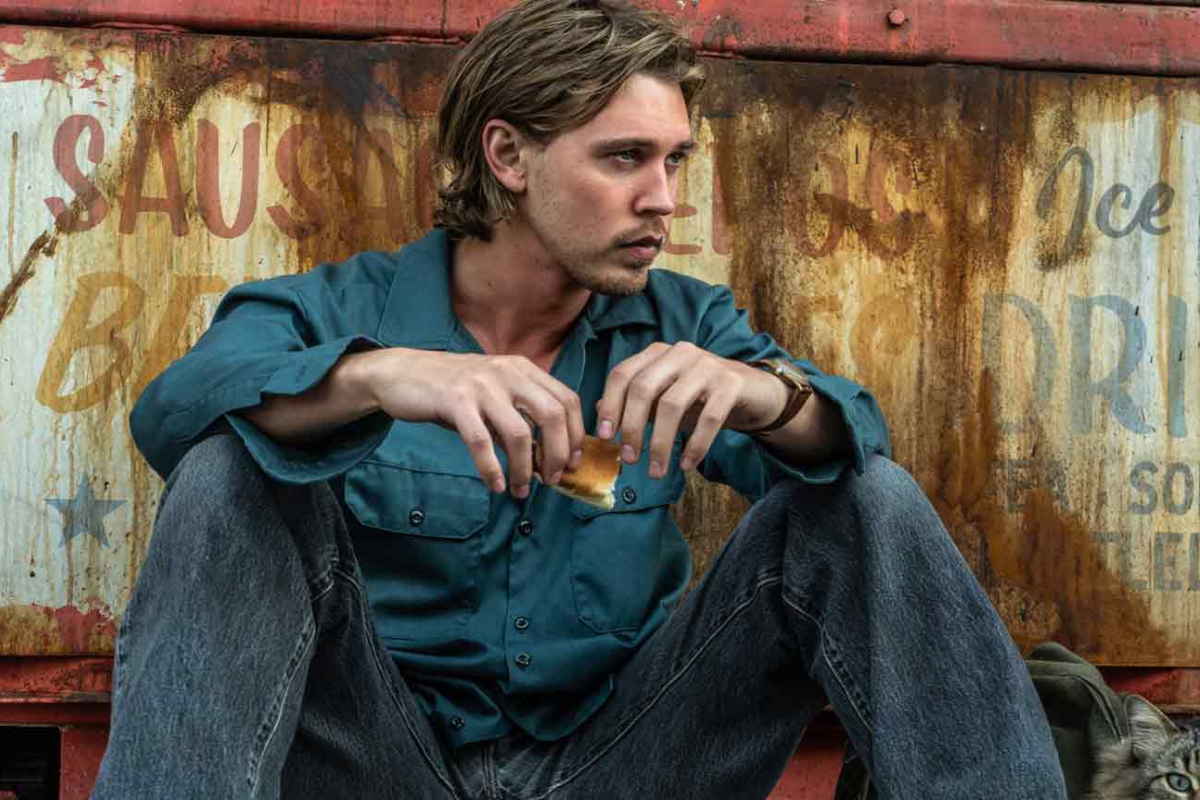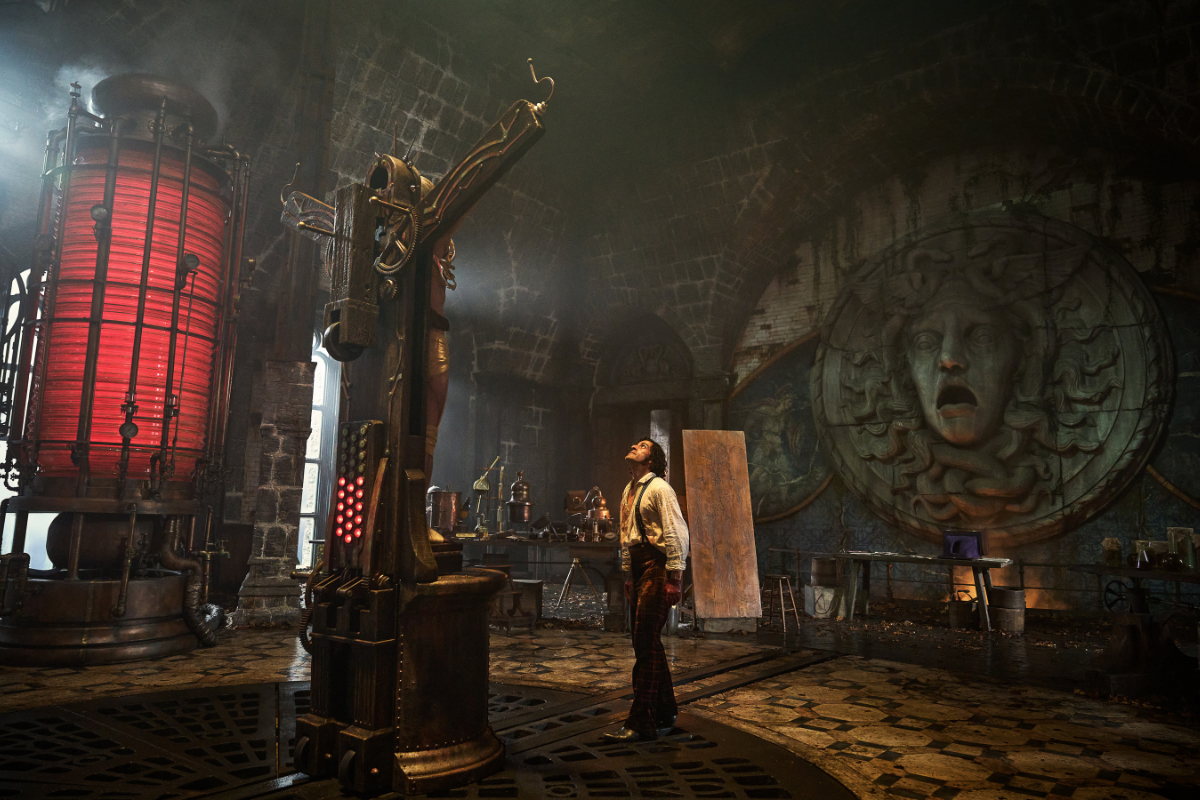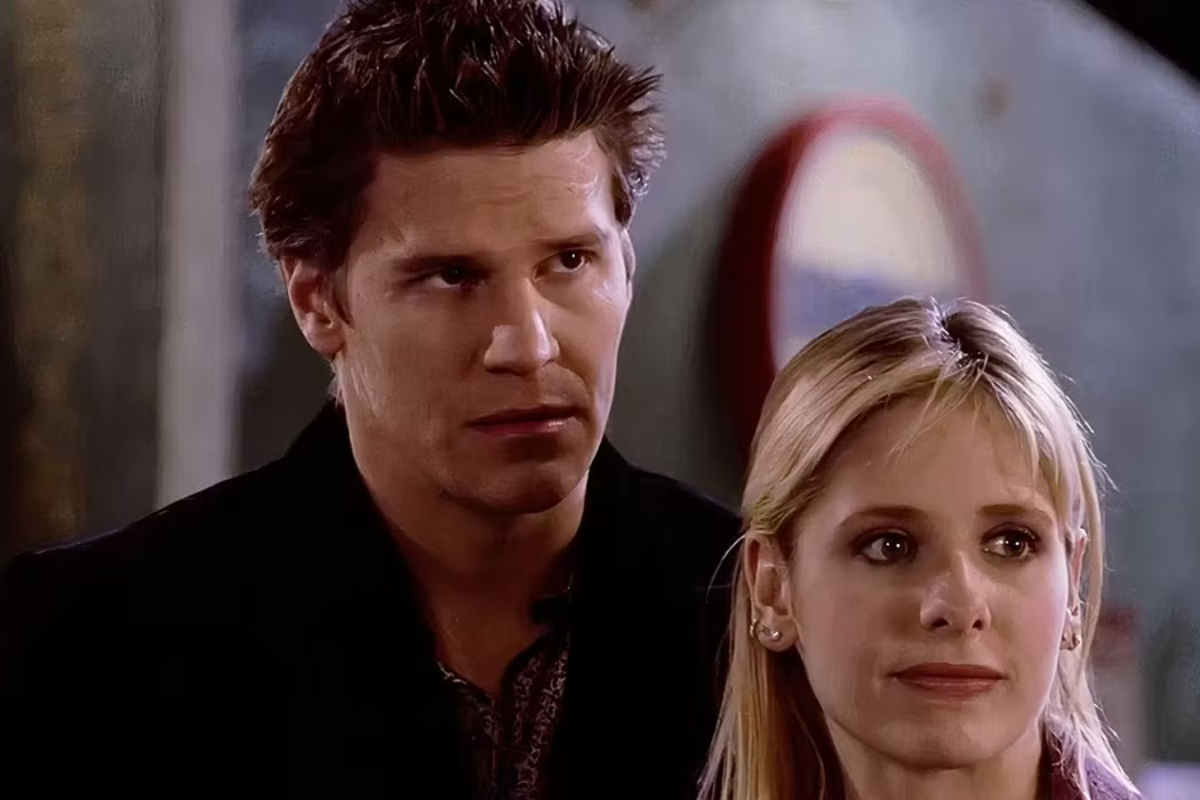CRAFT: The Swiniest Swine in the World – Writing Movie Villains We’ll Love to Hate
We screenwriters love to write these roles because through creating them, we exorcise our own demons. Staton Rabin explores writing movie villains and antagonists.
We screenwriters love to write these roles because through creating them, we exorcise our own demons. Staton Rabin explores writing movie villains and antagonists.
Staton Rabin (www.StatonRabin.com) is a screenplay marketing consultant, script analyst, and “pitch coach” for writers at all levels of experience. Contact: Cutebunion@aol.com. Follow Staton on Twitter @StatonRabin. Full bio here.
Harry Potter’s Voldemort. Hannibal Lecter. Darth Vader. Khan. Dr. No. The Phantom of the Opera. Mr. Hyde. Captain Bligh.
Why do these names still conjure up a chill or a nervous smile when they are only ghosts on celluloid in a can?—because great villains make great movies. Actors love to play them because these roles allow them to chew up the scenery. We screenwriters love to write these roles because through creating them, we exorcise our own demons. Many of us would probably be out killing the producers who turned down our last script or who forced us to rewrite Act III, if it weren’t for the catharsis that writing villains gives us.
What is a movie villain or, more accurately, an antagonist? It can be a “who” or an “it.” By that I mean that whatever most stands in the way of the hero and his goal can be an individual, a group (such as the “super posse” in Butch Cassidy and the Sundance Kid—Butch: “Who are those guys?”) a machine (Hal in 2001: A Space Odyssey), a town or force in society such as racism (To Kill A Mockingbird), or the price of fame (A Star is Born). An antagonist may also be a physical obstacle (such as a tall mountain) or a force of nature (Volcano; Twister). Sometimes, an antagonist can be an individual who symbolizes a negative force in society. Captain Bligh (Mutiny on the Bounty), the vicious taskmaster who drove his ship’s crew to rebellion, was clearly evil but also represented a larger wrong: the Royal British Navy’s cruelty toward its sailors in the l8th century. As it happens, the real Bligh, as opposed to the cinematic version, was not a particularly harsh captain for his day—but with embellishments he made for a memorable screen villain.
Heroes and villains have a symbiotic relationship. They are in a constant “Kabuki dance” of reaction and counter-reaction. One could not exist without the other. More importantly, one is really a reflection of the other. They are mirror images—but, more than that, they are really a part of each other. Often, the villain is the “dark side” of the hero—the part of himself he most fears and tries to suppress. If the villain understands this, he will know the hero’s weaknesses and use this knowledge and power against him. In fact, in Star Wars, the villain, Darth Vader, turns out to be literally “part” of the hero, Luke Skywalker. They are father and son.
Often, a hero can be his own antagonist. In Good Will Hunting, Will (Matt Damon) is his own worst enemy. He is a mathematical genius who is self-destructively wasting his talents and throwing his life away until Sean (Robin Williams), his psychiatrist, teaches him to get out of his own way.
The close, mutually dependent relationship between hero and villain is never more apparent than in films based upon comic books. What would Superman without Lex Luthor, Spider-Man without the Green Goblin? Having an arch-enemy gives the hero an opportunity to demonstrate his best qualities: courage, fortitude, and resourcefulness. Villains create problems for heroes, get them and others into tight situations, and it takes bravery and action for the hero to get them out.
Villains provide great opportunities for screenwriters to shine. By writing great dialogue for your villain, this also provides you with opportunities to write great “comebacks” or speeches for your hero. Villains will also help you by creating conflict and obstacles for your hero— and conflict and obstacles are what movies are all about.
Let’s take a look at what makes a great antagonist or “movie villain:”
VILLAINS ARE NO PUSHOVER
If your villain or antagonist is weak or lacks credibility, your hero will lack a strong obstacle to push against and will seem weak, too. Nobody gets any “brownie points” in movies for overcoming a minuscule challenge. Captain Bligh of the Bounty wasn’t just a tough leader. He was also a powerful adversary and a man who knew his business. As even his nemesis Fletcher Christian (Clark Gable in the l935 film, the best of the many screen versions), who ultimately led the mutiny on H.M.S. Bounty, acknowledged: “I’ve never known a better seaman,” adding, “—but as a man, he’s a snake. He doesn’t punish for discipline. He likes to see men crawl. Sometimes, I’d like to push his poison down his own throat.” By the way, if you change the word "seaman" to "actor", this quote might also apply to Gable's feelings about his co-star, Charles Laughton ("Captain Bligh"). In real life, Gable and Laughton loathed each other-- which probably enhanced their performances in Bounty.
VILLAINS ARE CLEVER AND CREATIVE
For most of your movie, your villain should be one step ahead of your hero, else the movie will have no suspense. Even if your antagonist is not a human being but rather a force of nature—a fire, for example—that force should be “winning” for most of the movie. In Backdraft, fire—which is one of the film’s antagonists— takes on a human-like presence. It seems to live, breathe, and out-think the firefighters. This was done intentionally. The soundtrack contains a subtle, “breathy” Darth Vader-like sound whenever fire is onscreen and on the rampage “looking” for its next human victim. If not exactly human, the fire registers subconsciously as a fire-breathing dragon, out to devour the hero.
The concept of the “evil genius” is used often in movies. From Sherlock Holmes’s Professor Moriarty to Dr. Strangelove to various James Bond “baddies” and beyond, villains have usually been as smart or smarter than the hero. However, this is not always the case. When a villain has a gun or a bomb, he doesn’t need to be very smart to cause a lot of trouble. In fact, he can be even more dangerous if he isn’t bright enough to connect cause and effect or think about consequences for his behavior.
Villains are often creative. They don’t just want to kill the hero. They want to make him suffer. Sssslowly. This may be bad news for movie heroes, but it is good for screenwriters, else their hero might get killed off in Act I, and the story would have nowhere else to go. Slow torture may also give the hero an opportunity to escape and fight another day.
VILLAINS ARE NOT ALWAYS MALEVOLENT
Antagonists, such as forces of nature like floods or tornadoes, clearly aren’t “after” the hero and out to “get” him like the vengeful crocodile that relentlessly pursues Captain Hook in Peter Pan. But even antagonists that take human—or semi-human, alien, or animal form-- aren’t necessarily motivated by malice. Frankenstein’s monster and King Kong were just big, misguided galoots who caused a lot of trouble by not knowing their own strength. They even had enough “heart” to fall in love: Frankenstein’s Monster with his “Bride” and Kong with Fay Wray (“Oh, no. It wasn’t the airplanes. It was Beauty killed the Beast.”).
Antagonist and “villain” are clearly not always synonymous. An antagonist can be a character’s love interest who resists his advances—until they (inevitably) fall in love. In fact, in most movie romances, this is exactly what happens, whether it’s You’ve Got Mail (which was based on the lovely l940 Lubitsch comedy, The Shop Around the Corner), When Harry Met Sally, The King And I, My Fair Lady, or those old Fred Astaire/Ginger Rogers movies. In romantic comedy, the hero and heroine usually start out hating each other. One may be the other’s antagonist, but neither is a “villain.”
Sometimes, a villain is insane; and it is his twisted way of seeing the world, rather than true malevolence, that explains his evil acts. Norman Bates (Anthony Perkins) in Psycho was just a boy who loved his mother. Annie Marie Wilkes (Kathy Bates) in Misery was just an overzealous fan. Hannibal Lecter (Anthony Hopkins) was just a gourmand. Well, not exactly. But the point still holds true. In movies as in life, villains do not think of themselves as being “evil”. They are, like the hero, just trying to survive in this world. Actors often say that when they are playing the role of a villain, they can’t “hate” the character. Instead, they try to understand things from the villain’s perspective. They find his humanity. When playing a villain, many actors look for the good in him. When playing a hero, they look for his fatal flaw. As a screenwriter, you must not hate your villains. If you do, you will end up writing a caricature, not a character.
Even Hitler liked dogs and children. When writing a villain, your job is to make him human. This requires a mix of qualities, not just pure evil. Ironically, if he is not all bad, this will make him all the more frightening. He will be both more “real”, and more unpredictable in his behavior. A villain who is, momentarily, more sympathetic to his victim and then suddenly turns on her viciously, is more scary than one whose behavior is consistent throughout.
VILLAINS CAN GO AGAINST “TYPE”
The highly effective “true crime” TV-movie And Never Let Her Go (based upon the book by Ann Rule), starred Mark Harmon as a politically powerful Delaware lawyer who murders the governor’s young secretary with whom he was having an affair. Harmon, who has the face of a choir boy and a charming, affable manner, was cast against type. He is a terrifying villain precisely because he seems like such a nice guy—the sort of man you could imagine yourself liking and trusting. It wasn’t just the casting or direction that created this effect. It was also in the writing. The only way we discover this character is a liar is when we notice that he’s telling one of his many women one thing while in the next scene telling another lover something that contradicts this. So our realization that he is a villain is a slow and gradual process, perfectly paced by the writer. The character has many appealing qualities—as most villains should. Not every villain should be an obvious candidate for “evil.”
VILLAINS GET ALL THE GOOD LINES
Avoid clichés when writing your villain. Do him justice. Give him fascinating, original, and truly frightening things to say. Sometimes, villains are very erudite. It’s now become a movie cliché for them to quote Shakespeare, but there is still much remaining for screenwriters to do in writing interesting dialogue for their villains.
Here are some examples of cliché “villain lines” that screenwriters will want to avoid:
“Welcome to my little abode.”
“Thought you could escape me, didn’t you?”
“In five seconds, you will be crushed to death like an insect by the walls of that room you’re standing in.”
“So—we meet, again.” .. and ...
“You’ll find your girlfriend is in the best of hands. Mine. Pretty little thing, isn’t she?” (the hero lunges at the villain’s throat)—or any famous quotation or cliché used in common parlance, such as: “Ah— sweet revenge!”
Sometimes, it’s all right to use dialogue clichés or famous quotes in your screenplay if you “turn them on their head.” In Star Trek II: The Wrath of Khan—in which Admiral Kirk’s old nemesis, the genetically engineered villain Khan, is in his usual dance of death chasing after Kirk by star ship—the screenwriters do just that. How many examples of cleverly souped-up clichés can you find in this brief excerpt?
JOACHIM
They’re requesting communications, sir.
KHAN
Let them eat static.
JOACHIM
They’re still running with shields down.
KHAN
Of course. We’re one big happy fleet.
Ah, Kirk, my old friend, do you know
the Klingon proverb that tells us revenge
is a dish that is best served cold?
(pause)
It is very cold in space.
A VILLAIN NEVER SAYS “DIE”
In order to sustain the conflict over the three acts of your screenplay, your villain will have to be every bit as determined as your hero and must fight till his last breath. Often the villain makes an “I’m going to get you!” speech, that makes this very clear. In The Wizard of Oz, the Wicked Witch vows, “I’ll get you, my pretty, and your little dog, too!” Sometimes, a villain is so determined he won’t give up even after he’s already defeated the hero. In Star Trek II: The Wrath of Khan, Khan is told by a crewman that he needn’t chase Admiral Kirk again. He has already proven his superior intellect and defeated him once. Khan explodes (with echoes of Ahab in Moby Dick).
KHAN
He tasks me! He tasks me!
And I shall have him. I’ll chase
him round the moons of Nibia
and round the Antares maelstrom
and round perdition’s flames
before I give him up.
(as no one speaks)
Prepare to alter course.
In Mutiny on the Bounty, when Captain Bligh’s crew, led by Fletcher Christian, has mutinied and forces him over the side into a small boat with a few men and meager provisions and all seems lost for Bligh, he shouts to the mutineers: “Casting me adrift thirty-five hundred miles from a port of call. You’re sending me to my doom, eh? Well, you’re wrong, Christian! I’ll take this boat as she floats to England if I must. I’ll live to see you—all of ya—hanging from the highest yardarm in the British fleet!”
What’s more Bligh keeps his promise— he survives and reaches England. And while he never catches Christian, he does see to it that Fletcher’s best friend, Roger Byam, who, ironically, opposed the mutiny, is brought to court-martial. In a powerfully moving and impassioned speech, young Midshipman Byam (Franchot Tone)—who has just been sentenced to death by the court—responds by pleading not for his own life but for reformation of the cruel way British captains treat common seamen. When he is asked by his judges if he has any final words, he replies: “These men don’t ask for comfort. They don’t ask for safety. ... They ask only the freedom that England expects for every man. If one man among you believed that—one man!—he could command the fleets of England. He could sweep the seas for England if he called his men to their duty, not by flaying their backs but by lifting their hearts—their ... that’s all.” Near tears, knowing the futility of his plea for compassion, his voice trails off.
This speech would have meant nothing if Captain Bligh (as played by the formidable Charles Laughton) hadn’t been the sort of villain that made you want to see an end to flogging, and sea captains like him, as badly as Byam does. Good villains not only make good movies, but they also make good heroes. They even make good speeches for heroes. Make the most of this.
VILLAINS PLAY IT STRAIGHT
Even if you’re writing a comedy, your villain must not be played for laughs. If he is not “for real,” there won’t be enough of a credible threat to your hero for the story to work. Watch Basil Rathbone as the evil swordsman Sir Guy of Gisbourne in The Adventures of Robin Hood (l938) and then playing pretty much the same kind of role in the Danny Kaye comedy The Court Jester (l956). Yes, Jester is a very funny movie (“No! The pellet with the poison’s in the flagon with the dragon, the vessel with the pestle has the brew that is true!”)— but Rathbone plays the role totally straight. His wit is sharp, but so is his sword—and he’s not kidding around. Rathbone was an expert fencer, and it’s rumored he coached Kaye in the art for this movie. Kaye’s hilarious efforts to deal with its many villains’ serious threats to his life are what make it all work.
Even when your script’s villain is totally absurd (e.g., Dr. Strangelove), always remember that he takes himself and his goals very seriously.
BEFORE WE FADE OUT ON OUR VILLAIN ...
This brings us to one last question: Who should your villain be—assuming he’s a "he" and not a “what?” In this post- Cold War world, who are the villains of the New World Order? Without the Communist “villains” of movies made in the second half of the twentieth century, screenwriters are somewhat bereft. Who should be the bad guys in movies of today? Arab terrorists? Careful—this is a sticky issue. Not only is this an emotional subject for many, but also, obviously, not all Arabs are terrorists (nor are all terrorists Arabs). But film has a way of making the specific seem general and if you put an “Arab terrorist” in your script, it will be hard to do this without racist overtones.
Stereotyping people—such as making your African-American characters drug dealers and pimps, or your gay characters psycho serial killers or pedophiles—is something you’d do well to avoid.
Are “mad scientists” the wave of the future when it comes to movie villains— much as scientists were sometimes cast as villains in movies of the l930s–l960s? Will there be a new wave of evil scientists, who create an army of clones who sing like bad imitations of Adele or Taylor Swift? I've watched "The Voice", and I think it’s already started.
CREDITS:
Special thanks to Nicholas Meyer. Star Trek II: The Wrath of Khan (Paramount, 1982), directed by Nicholas Meyer. Screenplay by Jack B. Sowards (though Sowards got the credit, Meyer wrote the final draft), story by Harve Bennett.
Screenwriters University's Online Course
Pixar's Emotional Core: Character Development Intensive
REGISTER NOW!
Staton Rabin (www.StatonRabin.com and www.ScreenplayMuse.com) is a screenplay marketing consultant, script analyst, and "pitch coach" for screenwriters at all levels of experience. She is also an optioned screenwriter, has been a reader for Warner Bros. Pictures, New Line Cinema, William Morris, and major screenwriting contests, and was a frequent guest lecturer at NYU. Her novel Betsy and the Emperor was at one time in development as a movie with Al Pacino attached to star. Staton Rabin is available for script reading/analysis and consultations and can be reached at Cutebunion@aol.com.







